The bed was so comfortable at the Okayama Koraku Hotel that I didn’t want to get up in the morning. However, I was looking forward to seeing Kurashiki, which my friend had highly recommended, so I eventually arose, took a shower, packed my luggage, and headed for Okayama City‘s Okayama Station. I had some pastries and coffee for breakfast before boarding my train, and it was not long before I was in Kurashiki itself.
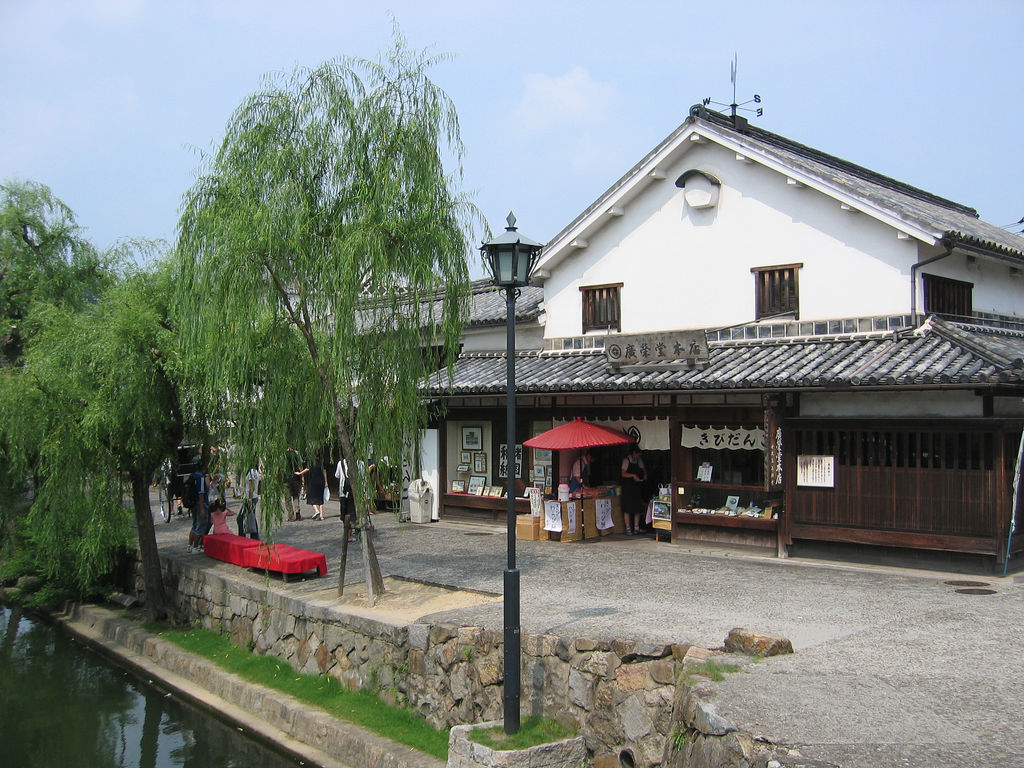
Kurashiki
After stowing my luggage in a coin locker at the station, I walked south down the main road and easily found the Bikan Historical Quarter. This area used to be used for storing rice, and now the old warehouses have been converted into cute boutiques and charming restaurants.
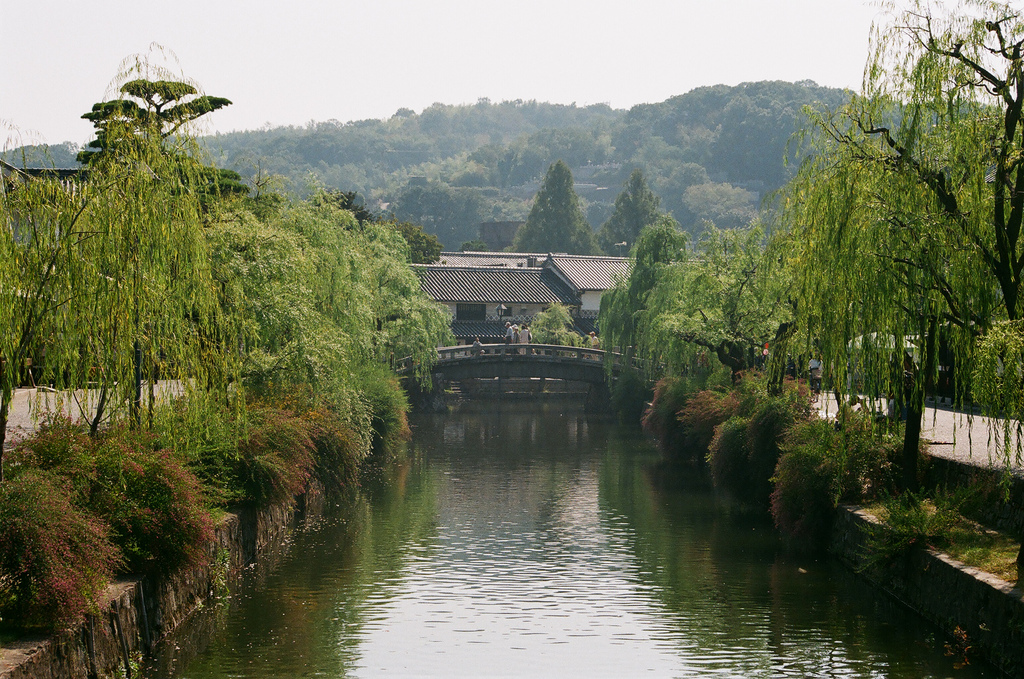
Kurashiki Bikan Historical Quarter waterway
The warehouses run along a canal which was so quaint and pretty, just like a storybook scene. There were willow trees with branches dipping into the water, swans, and even gondolas rowing passengers along. I immediately fell in love with the little neighborhood.
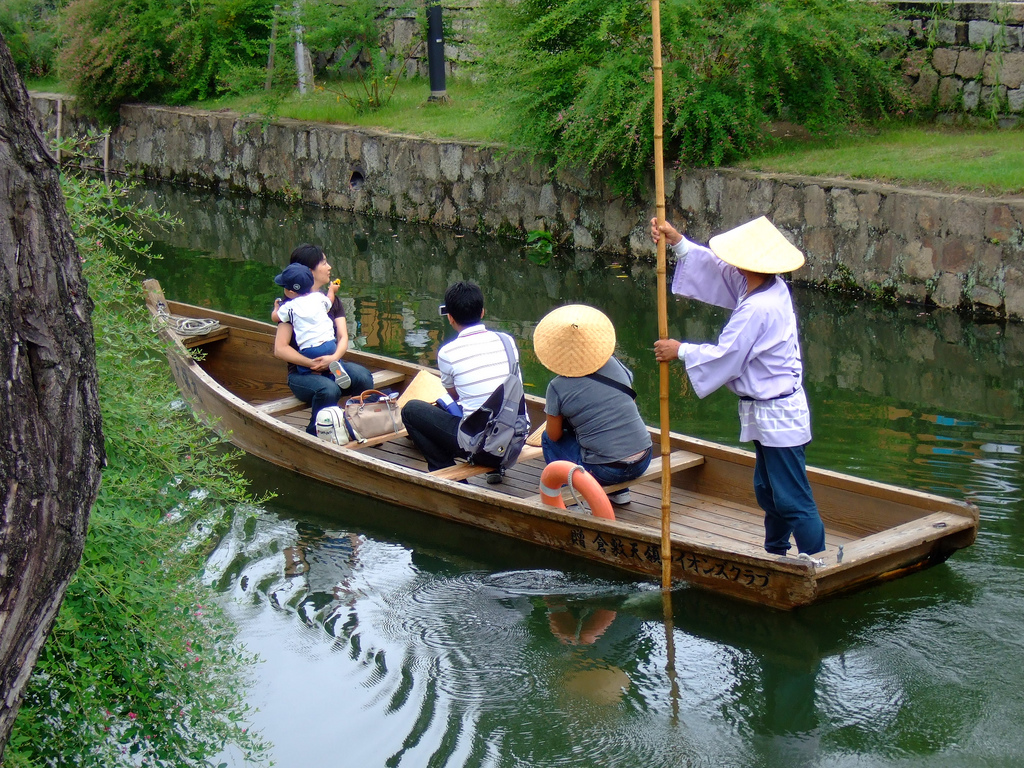
Kurashiki Bikan Historical Quarter waterway boat
I strolled up one side of the canal and down the other, toying with the idea of a rickshaw ride, but rejected it so I could explore the shops better. I am not an avid shopper, but there were so many interesting places that each had fun things to see…not just tacky souvenirs, but Bizen pottery that looked suitable for museums, high-end hand-made clothing, small fabric gift items, and dozens of different types of treats.
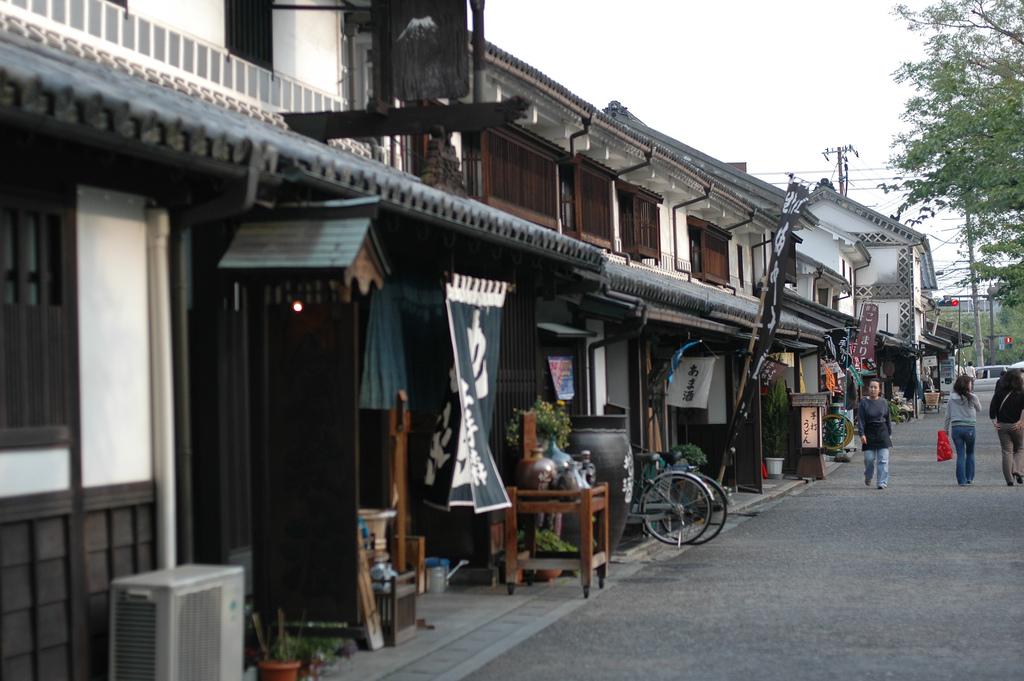
Bikan-chiku in Kurashiki
I stopped at one store for a sample of kibi dango, the local specialty. I was a bit dubious about the gelatinous sphere that was vaguely pink, but the store owner assured me that it was delicious and tasted of peach. He was right, it was subtly flavored and sweet. I ended up buying a box. It was covered with the image of the local hero, Momotaro, who supposedly ate kibi dango and gained strength to fight demons with it. Maybe he took advantage of the sugar rush?
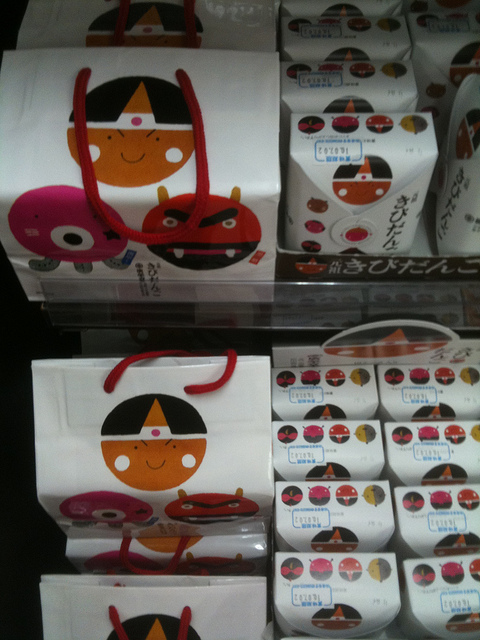
Kibi Dango Delicious Souvenir (photo: shok/flickr)
I noticed many people heading off the main path and followed them, and was surprised to find that there were more streets with stores and restaurants behind the main one with the canal. Ivy Square was interesting and there was a hotel open inside some of the historical buildings called Kurashiki Ivy Square hotel which would be nice to stay at if spending a few days in the city.
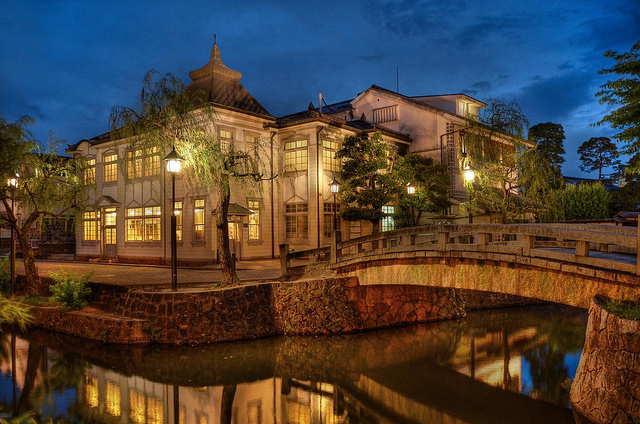
A bridge crossing the river in the historic Bikan District in Kurashiki, Okayama Prefecture, Japan (photo: lestaylorphoto/flickr)
The architecture of the Bikan historical quarter was wonderful, all white walls with black lattice trim. There were some buildings made of dark, heavy wood. I found a tea shop that was roasting its own tea and at a sniff of the rich aroma had to buy a bag for myself. There was another shop selling goods all hand made out of bamboo, from coasters to hats to brooms to vegetable graters, but I resisted those because they would not fit well in my luggage.
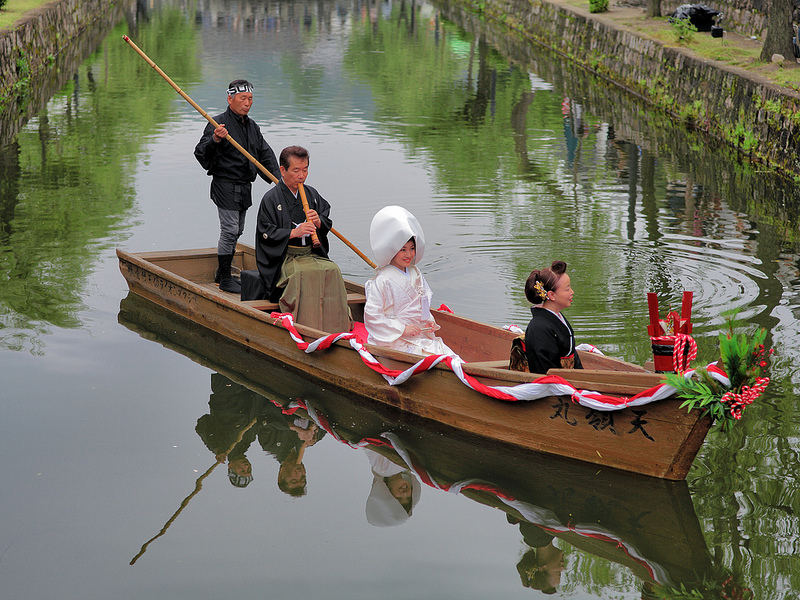
Kurashiki Bikan Historical Quarter wedding boat (photo: Nam2@7676/flickr)
I did not even stop at a restaurant for lunch, but ate several items sold from counters. I sat on benches outside the shops to enjoy the fresh senbei crackers, creamy cheese croquettes, and a decadent ice cream cone. When I had my fill of walking around the little shops and the canal area, I headed for the Ohara Museum, which I heard had a good collection of Western art.
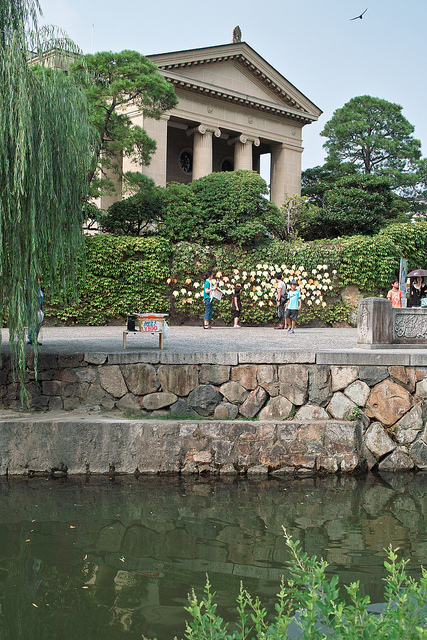
Ohara Museum in Kurashiki Okayama (photo: skidsk/flickr)
Again, I was delighted beyond my expectations. The museum was well arranged and had plenty of labeling in English. And the collection had one famous artist after another; it was almost overwhelming. Even I, who am not the most educated when it comes to painting and sculpture, had heard of people like Monet, Degas, Kandinsky, and Picasso.
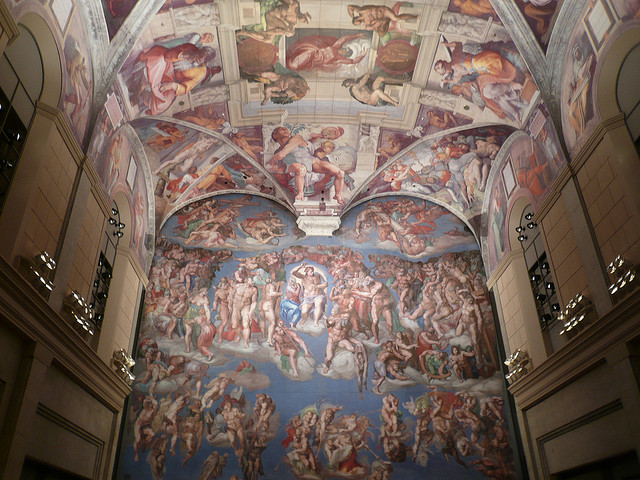
Ohara Museum of Art in Kurashiki Okayama (photo: Koji Yatani/flickr)
There were even Rodin statues out front of the Ohara Museum. One of the buildings looked like a Greek temple, another like a Japanese warehouse. I went through all the exhibits in all the buildings. It seemed a bit surreal to be looking at Egyptian artifacts on a trip to Japan, but there was a good collection of those, too.
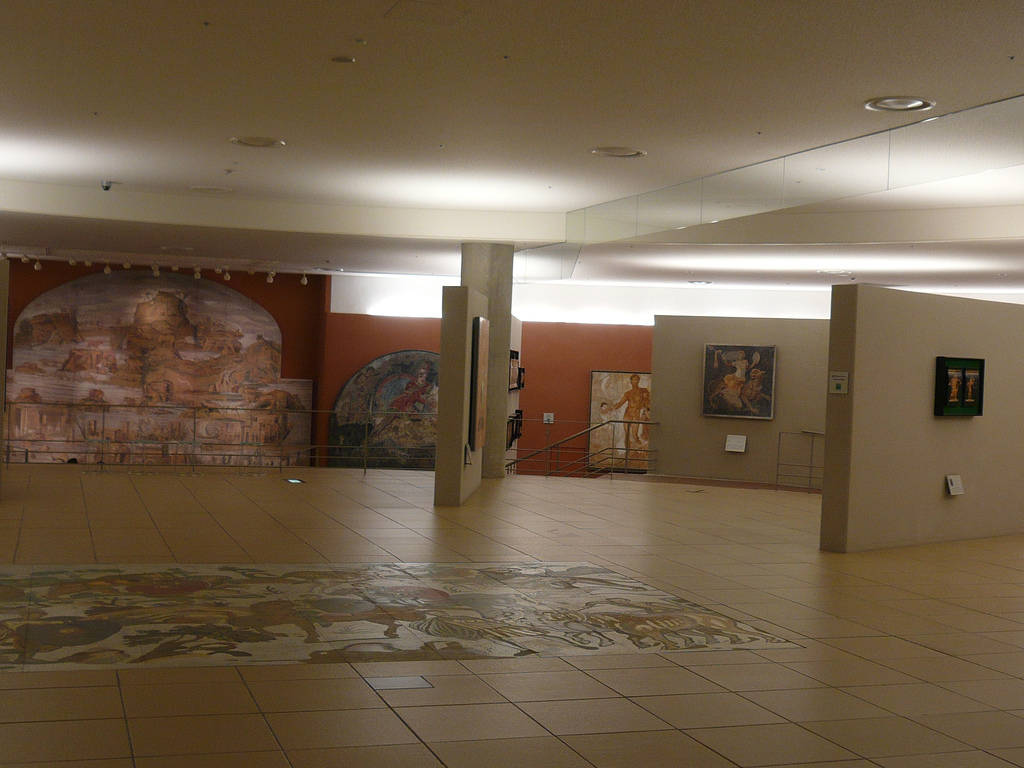
Ohara Museum of Art Interior in Kurashiki Okayama (photo: Koji Yatani/flickr)
But I think my favorite part was what was called the Craft Annex. It featured Japanese arts, including stenciled textiles, pottery, and woodblock prints. I have a fondness for woodblock prints, though I don’t know much about them, so was swept into the bright and stylized world that they contained.
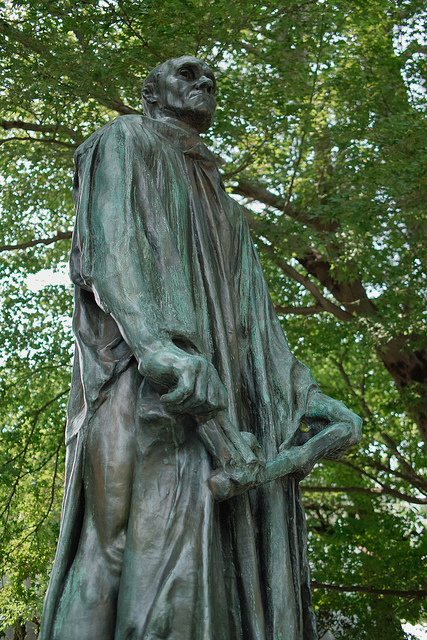
Ohara Museum of Art Statue (photo: skidsk/flickr)
When I left the Ohara museum, it was already starting to get dark, so I decided to try to find a place for dinner. Wandering around, I stumbled across a small okonomiyaki restaurant with the feel of a pub. It was warm inside from the griddles in the middle of the tables, and I ordered a squid okonomiyaki and beer.
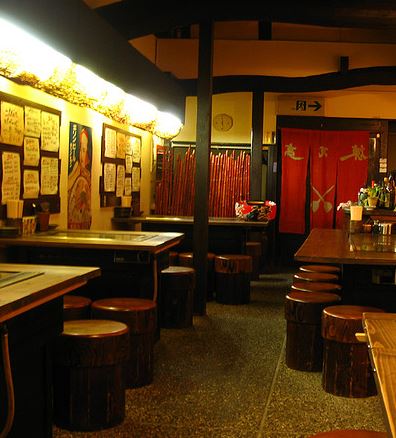
Okonomiyaki in Kurashiki
I was seated on a polished wood stump at the same table as two young business men. When my meal arrived and was placed on the griddle to stay warm, the men introduced themselves as Jun and Kenji from Osaka. They asked if they could practice their English if they paid for another beer and I readily agreed.
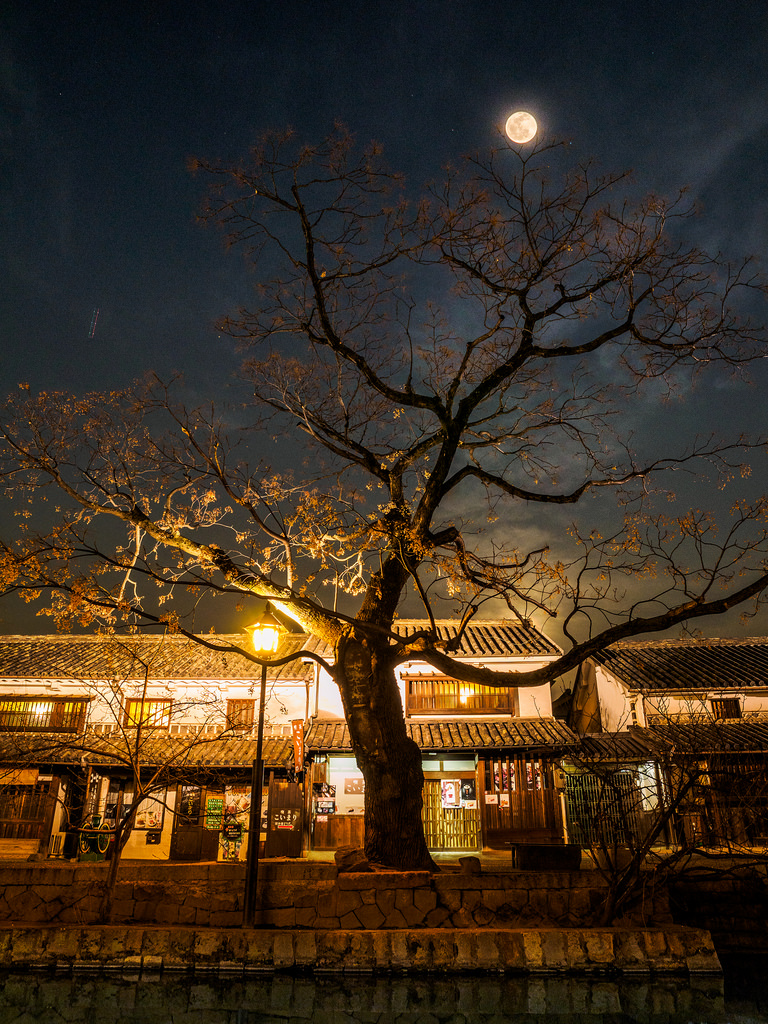
Kurashiki at night (photo: Takuma Kimura/flickr)
The two young men had such good English that they didn’t really need practice, but it was fun to talk together. We ended up staying much later than I had planned, and they paid for a taxi to take us back to Kurashiki Station. We parted there, but only after exchanging business cards and promising to stay in touch. It was with a little regret that I boarded my own train toward Kyushu, suddenly feeling very alone. But I have good memories, and will surely meet others like them at my next destination.
photos by: skyseeker & Yuki Yaginuma